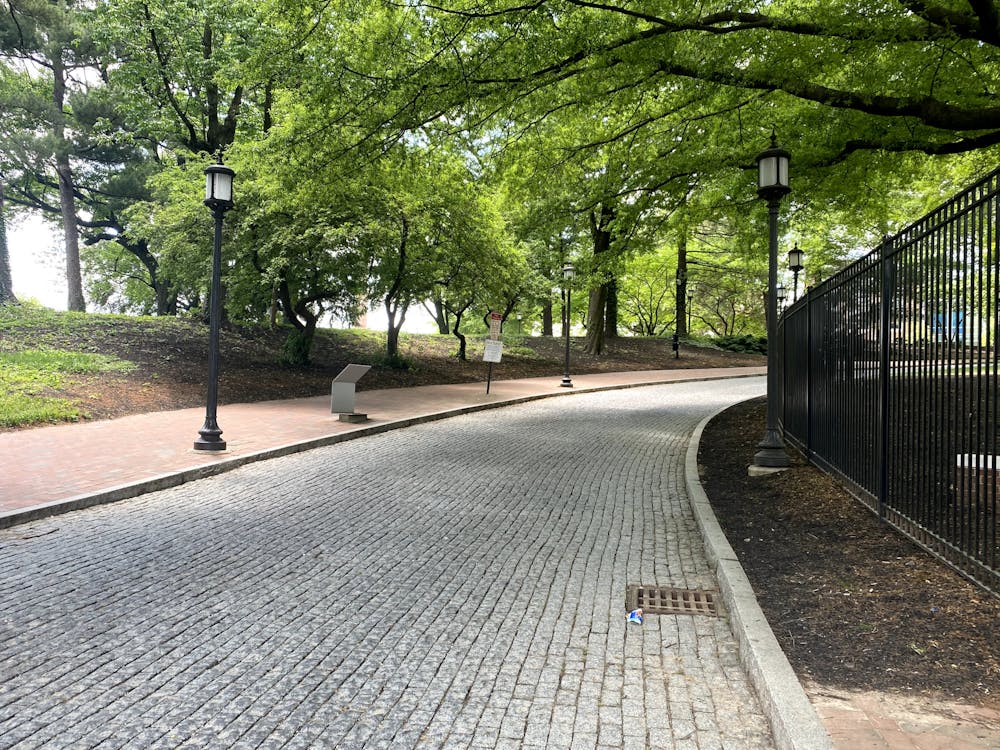The University launched Realizing Our Promise: The Second JHU Roadmap on Diversity, Equity and Inclusion with a virtual kickoff event on March 11, bringing several speakers to discuss the goals and initiatives of the Roadmap. This Roadmap is the second stage of the University's mission to incorporate diversity, equity and inclusion (DEI) into the core framework of the institution.
The second Roadmap was designed to address the strengths and shortcomings of the first Roadmap, launched in 2016, and the recommendations of the Roadmap 2020 Task Force.
At the event, University President Ronald J. Daniels recalled the influence of the first Roadmap on the institution.
“We have laid a critical foundation for public accountability and radical transparency through a regular report on staff, faculty and graduate student diversity numbers across our divisions,” he said.
However, he also acknowledged the limitations of the first Roadmap and how there is still substantial work that remains to be done. The second Roadmap provides a new set of goals that will be the focus of the next five years to more effectively promote diversity within Hopkins and the greater Baltimore community.
University of Maryland, Baltimore County President Freeman Hrabowski described how real change only occurs with the collective.
“Unless you get to the heart, the core, of the institution at different levels, from staffing to the professoriate to students to alumni to the community, and unless we all say we can be better if we work across these differences to appreciate what we have in common... we all have more work to do,” he said.
In an interview with The News-Letter, freshman Shreya Aravindakshan reflected on diversity, equity and inclusion on campus.
“Each incoming class of students has been more diverse and more people are being represented, not just racially but socioeconomically, on basis of gender,” she said. “Sometimes a better job can be done of supporting these diverse students throughout their four years on campus.”
Aravindakshan remarked on how programs like the Mentoring Assistance Peer Program have helped ease her transition into the University and believes that more support from the University with similar programs would be helpful for students.
Summer Lopez, senior director of free expression programs for PEN America, discussed how college campuses are microcosms of the larger society and how higher education faces the same issues that society does, including struggles with deep polarization, an increasing willingness to suppress others’ views and the resurgence and emboldening of hate.
Lopez noted how we are witnessing extreme government censorship including bans on certain books and the discussion of certain concepts, such as the “Don’t Say Gay” bill in Florida. She explained how all of these issues pose a threat toward our society becoming a more pluralistic one.
“Campuses can and must both robustly defend principles of free speech and academic freedom and advance diversity, equity and inclusion,” she said. “All too often these values are placed at odds with one another, but a pluralistic campus and a pluralistic society demand that we embrace, defend and advance them in tandem.”
University of Michigan Professor of Complexity, Social Science and Management Scott Page took a more analytic approach to show the implication of diversity in a social setting. He explained that with a diverse group of people, the same situation can be viewed with multiple distinct perspectives.
He introduced the concept of a diversity bonus, a phenomenon that spans a wide range of disciplines, whether it be with determining the cause of a disease, the number of citations of a published paper or making predictions.
“A diverse group almost always outperforms the group of the best by a substantial margin on problem-solving,” he said.
KerryAnn O’Meara, University of Maryland professor of higher education, took a specific look at the unequal workload distribution among faculty members, citing implicit biases in higher education that are associated with tasks such as hiring, granting awards or writing letters of recommendation.
O’Meara’s work has shown that women and minority faculty are being asked to volunteer more often and often face an increased workload.
“Faculty are getting differential credit and being asked to do different kinds of things within especially research university spaces,” she said.
The Faculty Workload and Rewards Project that O’Meara has worked on for the past six years concentrates on increasing awareness of workload inequity, giving context for the work that faculty members are doing and placing guardrails to ensure proper credit for the work.
Dr. Adler Archer, senior advisor for strategic initiatives at the Whiting School of Engineering, directs his work toward promoting inclusive innovation within institutions. He emphasized how certain populations face threats to innovation inclusion, as Black and Hispanic employees have a higher probability of working at jobs that risk being automated, and female and Black inventors face an innovation gap due to insufficient funding.
Archer believes that with proper engagement, education and outreach, it is possible to resolve these issues.
“In the context of organizations and how we can create and cultivate inclusive innovation ecosystems, there’s a powerful opportunity to leverage our resources to do just that,” he said.
Vice Provost for Diversity and Inclusion Katrina Caldwell, who worked on the Roadmap 2020 Taskforce, stated that in the wake of alarming international and national conflicts in the world, the core principles of the Roadmap will bring the community together.
“This is an extraordinary and meaningful opportunity for us as a community to demonstrate our shared commitment and to show how the principles of diversity, equity and inclusion are essential components to realizing our academic and research missions,” she said.





